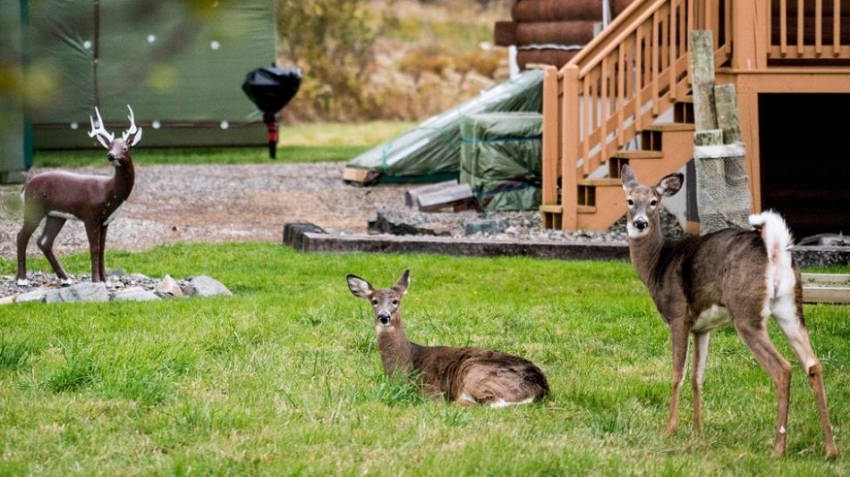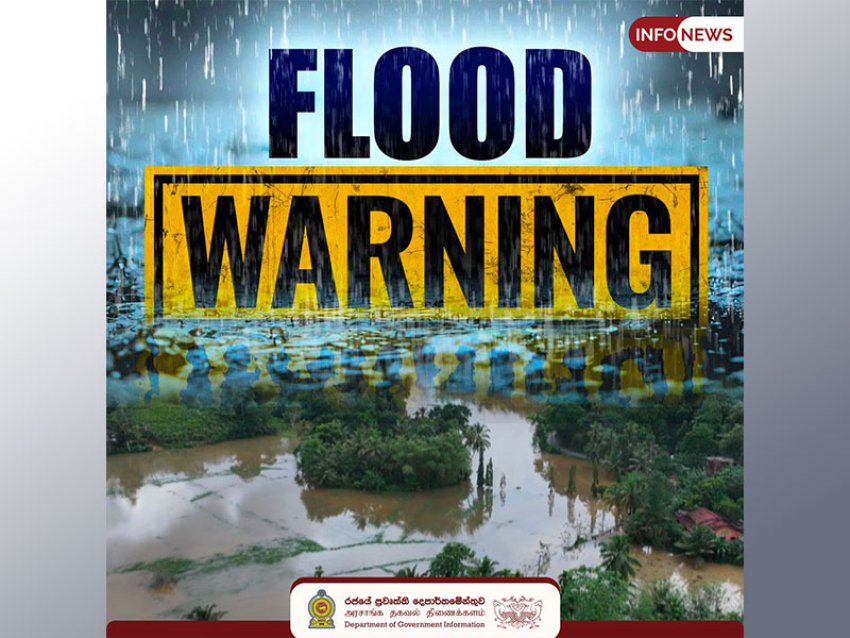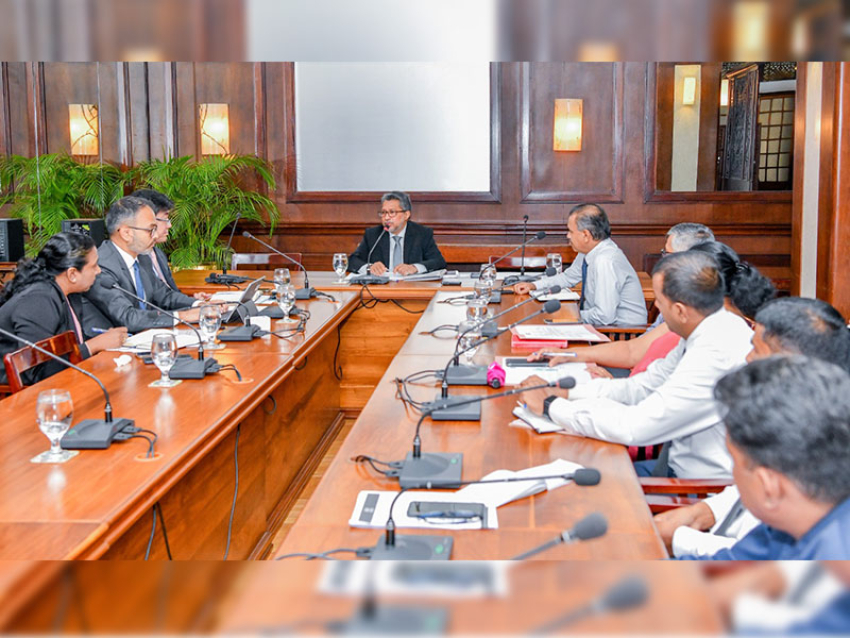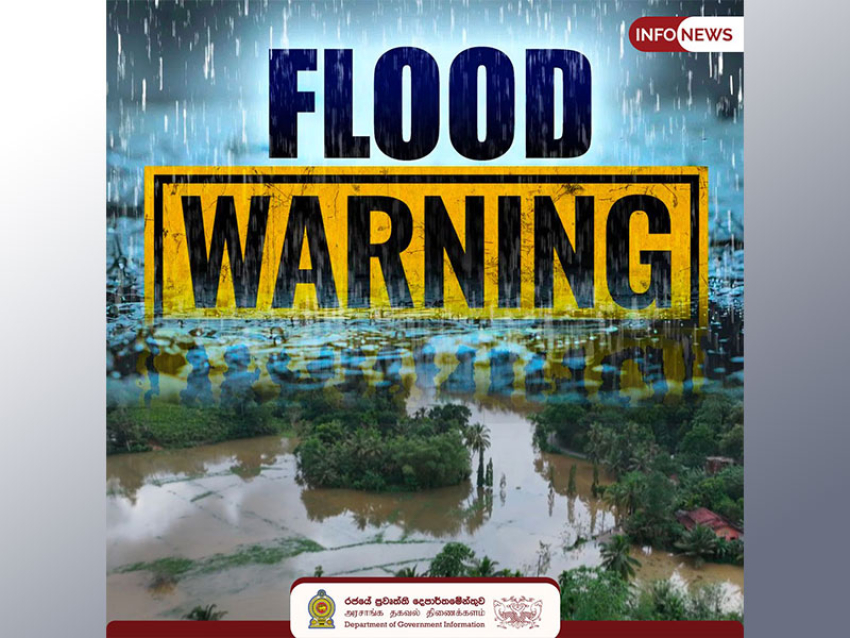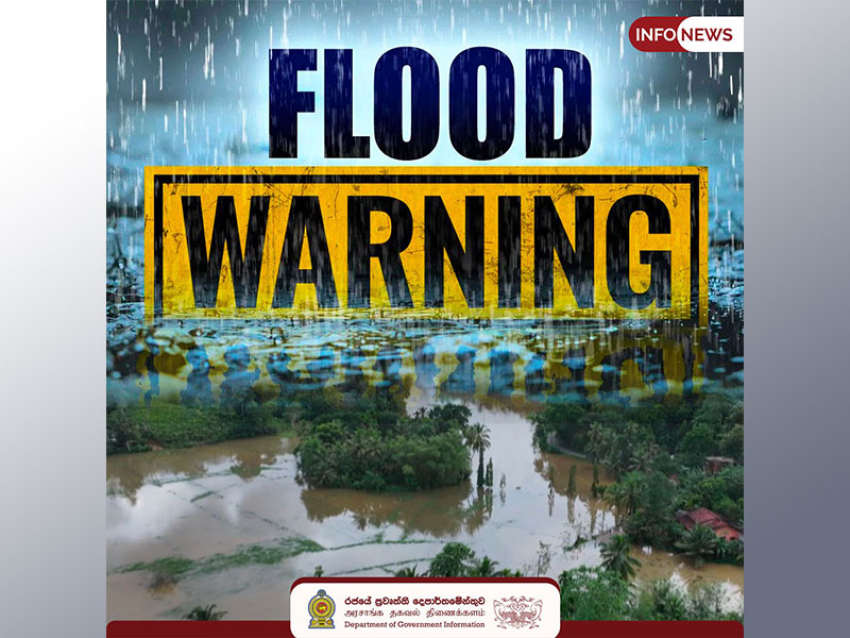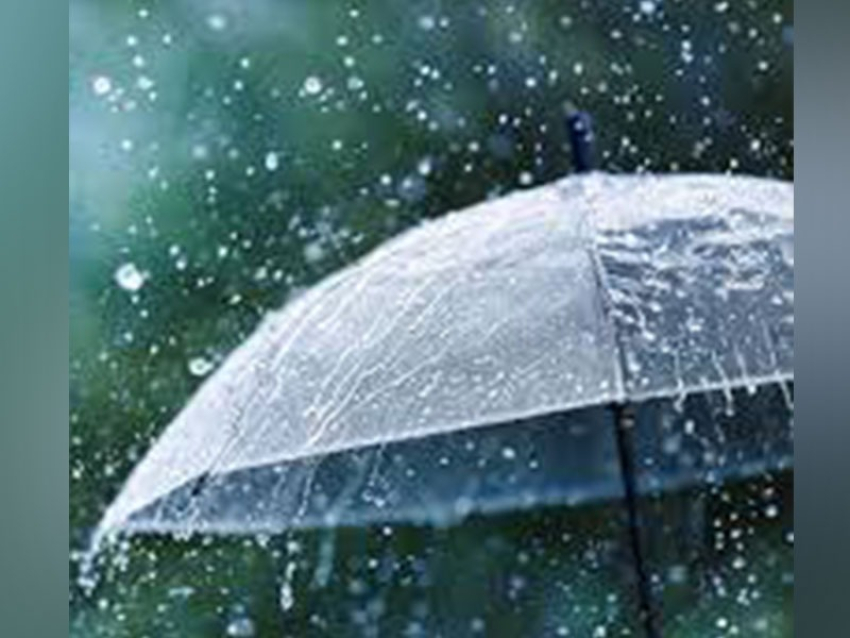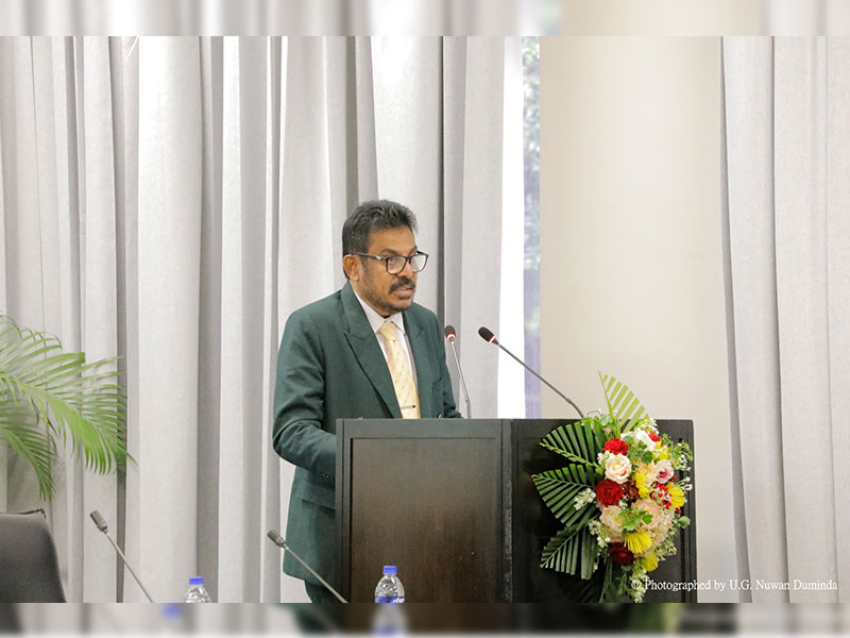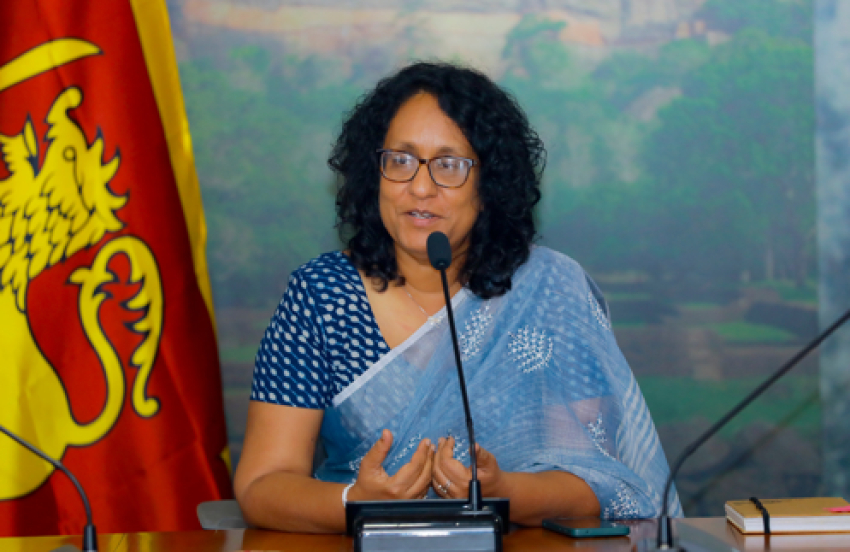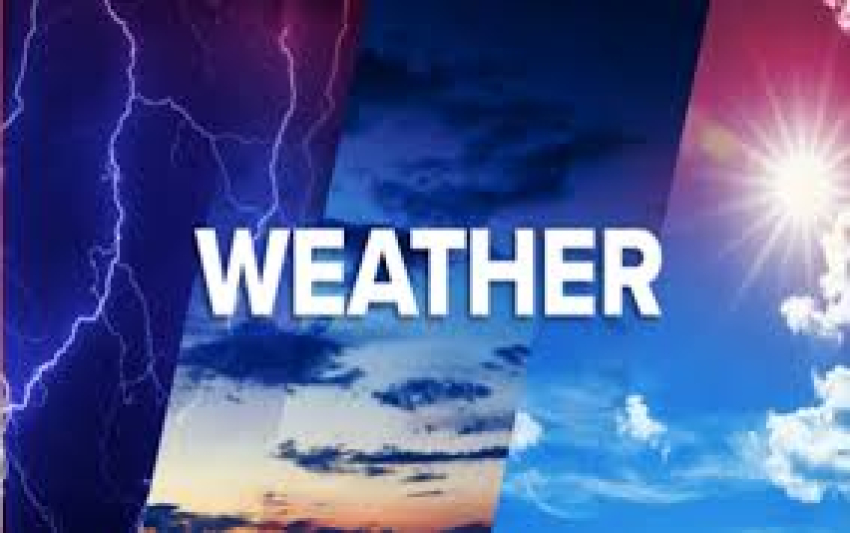ith one in every four species facing extinction, which animals are the best equipped to survive the climate crisis? (Spoiler alert: it’s probably not humans). “I don’t think it will be the humans. I think we’ll go quite early on,” says Julie Gray with a laugh. I’ve just asked Gray, a plant molecular biologist at the University of Sheffield, which species she thinks would be the last ones standing if we don’t take transformative action on climate change. Even with our extraordinary capacity for innovation and adaptability, humans, it turns out, probably won’t be among the survivors.
This is partly because humans reproduce agonisingly slowly and generally just one or two at a time – as do some other favourite animals, like pandas. Organisms that can produce many offspring quickly may have a better shot at avoiding extinction.
It may seem like just a thought experiment. But discussing which species are more, or less, able to survive climate change is disturbingly concrete. As a blockbuster biodiversity report stated recently, one in every four species currently faces extinction. Much of this vulnerability is linked to climate change, which is bringing about higher temperatures, sea level rise, more variable conditions and more extreme weather, among other impacts.
You might also like:
• Could wooden buildings be a climate change solution?
• How catastrophes can change the course of humanity
• Ten simple ways to act on climate change
Some caveats are in order. While the seriousness of climate change is undeniable, it’s impossible to know exactly how those effects will play out for species vulnerability, especially far into the future. Methods of forecasting vulnerability are ever evolving, while limited and inconsistent data, plus the complex interactions of policies, land-use changes, and ecological effects, mean that projections aren’t set in stone. Climate change vulnerability assessments have had biases and blind spots (just as humans do more generally). (Read more about how our cognitive biases prevent climate action). Moreover, the indirect effects that are responsible for many climate change impacts on populations, such as in the food chain, are more complex to model than direct effects.
Some species of Australia’s quolls already have been made locally extinct by invasive species, a trend that will intensify with climate change (Credit: Getty Images)
Another source of uncertainty has to do with life forms’ capacity to adapt. Take ectotherms (cold-blooded animals like reptiles and amphibians), which have historically been slower to adapt to climatic change than endotherms. For one thing, they are less able to adjust their body temperatures. But there are exceptions, like the American bullfrog, which may actually find more habitable environments as a consequence of warming.
he American bullfrog could be one of few species to benefit from global warming And, of course, there is an alternative: we humans could get our acts together and stop the climate crisis from continuing to snowball by adopting policies and lifestyles that reduce greenhouse gases. But for the purposes of these projections, we’re assuming that’s not going to happen.Even with the uncertainties, we can make some educated guesses about broad patterns.Heat tolerant and drought resistant plants, like those found in deserts rather than rainforests, are more likely to survive. So are plants whose seeds can be dispersed over long distances, for instance by wind or ocean currents (like coconuts), rather than by ants (like some acacias). Plants that can adjust their flowering times may also be better able to deal with higher temperatures. Jen Lau, a biologist at Indiana University Bloomington, suggests that this may give non-native plants the advantage when it comes to responding to climate change.
We also can look to history as a guide. The fossil record contains signs of how species have coped with previous climatic shifts. There are genetic clues to long-term survival too, such as in the hardy green microalgae that adapted to saltier environments over millions of years – a finding only made in September 2018 by Fatima Foflonker of Rutgers and colleagues.Importantly, though, the uniquely devastating nature of the current human-made climate crisis means that we can’t fully rely on benchmarks from the past.“The climate change that we see in the future will differ in many ways from the climate change that we’ve seen in the past”, notes Jamie Carr, an outreach officer for the Climate Change Specialist Group of the IUCN Species Survival Commission.The historical record does point to the tenacity of cockroaches. These largely unloved critters “have survived every mass extinction event in history so far”, says Asmeret Asefaw Berhe, a soil biogeochemist at the University of California, Merced. For instance, cockroaches adapted to an increasingly arid Australia, tens of millions of years ago, by starting to burrow into soil.
Cockroaches have survived every mass extinction event in history thus far This shows two characteristics, says Robert Nasi, the director general of the Center for International Forestry Research (CIFOR): an “ability to hide and protect in buffered conditions (e.g. underground)” and a long evolutionary history, as in general “ancient species appear more resilient than younger ones”. These are among the traits that, Nasi says, are linked to surviving large catastrophic events which triggered major changes in climate.
Cockroaches also tend to not be picky eaters. Having broad diets means that climate change will be less of a threat to the food sources of species that are not too fussy about their food, such as rats, opportunistic birds, and urban raccoons.As a comparison, take an animal like the koala. Koalas eat primarily eucalyptus leaves, which are becoming less nutritious due to increasing CO2 levels in the atmosphere. As a result, climate change is increasing their risk of starvation.
Climate change is increasing the risk of starvation for koalas As well as having a specialised diet, koalas have low genetic diversity – one reason that chlamydia has ravaged wild koala populations. These are worrying traits in terms of extinction risk. “In many cases, specialised species are those that we expect to see disappear first,” says Carr. This extends to species in microhabitats like high elevation montane forests, or those in narrow ranges, like some tropical birds or small-island plants. Also vulnerable are species that depend on pristine environments.
That’s compared to the “early successional” species that succeed in disturbed habitats, such as grasslands and young forest. These species “might do well under climate change because they thrive in states of change and transition”, says Jessica Hellmann, who leads the Institute on the Environment at the University of Minnesota. “For example, deer (in the US) are common in suburban areas and thrive where forests have been removed or are regularly disturbed.”
Species that Carr calls “mobile generalists”, which can move and adapt to different environments, are likely to be more durable in the face of climate change. While this adaptability is generally positive, it might come at a cost to other parts of an ecosystem. Invasive species like cane toads, which are poisonous, have led to local extinctions of other species like quolls (carnivorous marsupials) and monitors (large lizards) in Australia. And Hellmann says that the versatility of invasive plant species “leads to the worry that, in addition to losing vulnerable species, a warmer world will be a weedier world”. The weeds typically found along roadsides may be especially long-lasting in comparison with other plants.
Deer, which thrive in states of change and transition, may be more resilient (Credit: Getty Images)
Of course, many organisms are intrinsically less mobile. Most plants will be unable to move quickly enough to keep pace with rapid heating, although they’ve done so in response to the slower climatic changes of the past.
Buffer zones
The good news is that some specialised species might have a buffer known as climate change refugia: areas that are relatively protected from climate change’s consequences, such as deep sea canyons. Although deep sea zones are heating up and declining in oxygen concentrations, Jonathon Stillman, a marine environmental physiologist at San Francisco State University, suggests that deep sea hydrothermal vent ecosystems, specifically, might be one bright spot in an otherwise mostly bleak situation.
“They are pretty much uncoupled from the surface of our planet and I doubt that climate change will impact them in the least,” he says. “Humanity didn’t even know they existed until 1977. Their energy comes from the core of our Earth rather than from the Sun, and their already extreme habitat is unlikely to be altered by changes happening at the ocean surface.”
Similarly, Douglas Sheil, a tropical forest ecologist at the Norwegian University of Life Sciences, suggests that “at some point in the future the only vertebrate species surviving in Africa might be a blind cave fish deep underground”. As in the deep sea hydrothermal vents, “many species remain undiscovered and thus unknown – Europe’s first cave fish was only found in Germany in 2015.”
Heat-adapted organisms and microbes living in extreme environments are likely to be less affected by climate change Thermophiles (heat-adapted organisms) living in extreme environments like volcanic springs are also likely to be less affected by surface temperature changes. Indeed, the organisms best able to live in severe circumstances are microbes, as noted by many of the scientists I’ve surveyed. Computer modelling suggests that only microbes would be able to survive increasing solar intensity. Soil biogeochemist Berhe says of archaea, one of the major types of microbes, “these critters have figured out how to live in the most extreme of environments”.
Not quite as tiny but also nearly indestructible are tardigrades, commonly known as water bears. Environmental physiologist Stillman enthuses: “They can survive the vacuum of outer space, extreme dehydration, and very high temperatures. If you are a Star Trek fan, you have learned about them in a sci-fi setting, but they are real creatures that live across most habitats on Earth.”
The future will have not only more extreme environments, but also more urban, human-altered spaces. So “resistant species would likely be the ones that are well attuned to living in human-modified habitats such as urban parks and gardens, agricultural areas, farms, tree plantations, and so on”, says Arvin C Diesmos, a herpetology curator at the Philippine National Museum of Natural History.CIFOR’s Nasi sums it up. “The winners will be very small, preferably endotherms if vertebrates, highly adaptable, omnivorous or able to live in extreme conditions.”In the words of the IUCN’s Carr, “It doesn’t sound like a very pretty world.”
Endangered plants like the Brodiaea are likely to be increasingly vulnerable with climate change Of course, to some extent we already know what’s needed to limit the bleakness of the future natural world. This includes reducing greenhouse gases; protecting biodiversity; restoring connectivity between habitats (rather than building endless dams, roads and walls); and reducing interrelated threats like pollution and land harvesting. Even species that are close to extinction, like Saiga antelopes, can be brought back from the brink with enough conservation effort. To reflect the power of sustained conservation, scientists are developing a Green List of species on the road to recovery and full health, to complement the IUCN’s Red List of threatened species.The political barriers are daunting. But scaling them, it seems, would beat surrendering the planet to the microbes.
If you liked this story, sign up for the weekly bbc.com features newsletter, called “The Essential List”. A handpicked selection of stories from BBC Future, Culture, Capital, and Travel, delivered to your inbox every Friday.
Share using Email
Open share tools
Like us on Facebook
The helicopter touches down on the sea ice at a landing site a few hundred metres from the ship. The group of scientists I have travelled here with heap their baggage and cargo on the ice, then we kneel around it with our heads down and hands over the bags, holding on tight to stop anything getting sucked into the helicopter’s draught as it takes off. I bury my face in my arms to protect my eyes from the fine snow crystals whipped up the wind as the rotors accelerate. When the noise of the engine fades away, we let go and uncover our faces to look around.
I have just arrived at an ice floe in the Central Arctic Ocean, a few hundred kilometres from the North Pole. The floe is a vast, thin crust of ice measuring about 2.5km by 3.5km (1.5 miles by 2.2 miles) across. For the most part, it is only 30-50cm (11.8-19.7in) thick. This piece of ice is the new home of the largest Arctic expedition of its kind, known as Mosaic, for the next year. Mosaic intends to form the most detailed picture yet of the Arctic environment, from the atmosphere to the ice and oceans, and the things that live there.
Several years in the past decade have reached new lows for summer sea ice extent, raising questions about what will happen in this new Arctic as the ice declines and retreats. How will the ecosystem respond? Can treaties keep fishing in the central Arctic in check? Is it possible for a ship to be present in the Arctic without polluting it?
You might also like:
How not to get stuck in Arctic sea ice
The problem of thinning sea ice
The icy camp where polar bears roam
Climate change is transforming the Arctic fast, and there is a danger that by the time the scientists have collected and analysed their data, it could already be out of date. In the fortnight I have been away from this floe, reporting from another icebreaker involved in the mission, the team has been moving quickly to get the camp up and running.
The last time I was here, it was only possible to see white and grey ice in every direction. When scientists first explored the floe, they weren’t even convinced it would hold their weight. Now, a network of huts and colourful tents are connected by paths of compacted snow and slack copper-coloured cables propped up by short poles lashed together into tripods. Close to the helicopter landing site is a row of Ski-Doos (a type of snowmobile) with low wooden Nansen sleds hitched on the back. Allison Fong of the Alfred Wegener Institute, leader of Mosaic’s ecology team, marshals the small herd of new arrivals onto the sleds.
The team has switched gears since their arrival at the floe. I last saw Fong poring over maps in a plush blue carpeted room lined with glass cabinets, discussing the plan of the camp with the rest of the leadership team. Now she wears a shiny black ski helmet and goggles, a rifle slung over her shoulder in case of polar bears, as she drives a Ski-Doo away with four people in tow.
The Polarstern is a home away from home for the scientists studying the ice over the winter (Credit: Martha Henriques)
Much of the work by Fong’s team will take place in the “dark zone” of the camp. Up in the high Arctic, with no settlements for more than 500km (312 miles) around, light pollution might not sound like too much of a problem. But the ship itself is flooded with light from the decks and cabins at all hours. When I looked up hopefully from the deck one night in my first week on board, the stars were no more visible than they are in central London.
The dark zone, planned to be a patch of ice far away from the brightness of the ship, will be an area with strict controls on how and when lights can be used. Light has a strong effect on organisms living in the Arctic, whose biology is closely guided by the cycles of day and night – and at this latitude, night lasts for several months.
Light is not the only way the ship’s presence could interfere with investigating the Arctic ice ecosystem. The ship, as well as being the scientists’ home, workplace and life-support system in this dark and freezing place, is also one of their biggest scientific concerns. “It’s not so different from people who are trying to find life in space – they have to be careful about the fact that they’re shedding cells all the time,” says Fong. “We’re a primary source of potential contamination.”
When there is less sea ice in the Arctic, the ecosystem here stands to change profoundly
The ship’s waste water is another potential source of interference, says Fong. Polarstern’s waste water handling system has been modified for Mosaic. The water is cleaned and purified until it can be emptied into the sea. Known as “grey water”, this waste is typically released in a constant trickle from the ship at 5m below sea level. But that relatively warm, fresh water could disrupt the ocean physics and the living organisms nearby. The solution is to add salt back into the water before release, and pump it down through pipes to 150m. At that depth, it will be less likely to cause an issue.
The scientists are going to all this trouble to modify their ship to answer a barrage of questions about the Arctic environment, including how it has been affected by climate change. When there is less sea ice in the Arctic, the ecosystem here stands to change profoundly.
For the organisms at the very base of the food web, it most likely means a longer growing season due to less ice cover in the summer months, so more light can reach them. “This has huge implications,” says Fong. “It used to be that there was a very small fraction of the year that we had intense phytoplankton and sea ice algal growth.” Exactly what this change in growing season means is still an unknown. It could be that a longer growing season means more photosynthesis, more carbon drawn down into the food web, and more energy flowing through the Arctic ecosystem as a whole. But it might not be that simple.
Met City is a hub of warmth and light on the outer fringes of the camp (Credit: Martha Henriques)
There’s a question of whether or not these organisms are adapted to deal with the new conditions and the timing,” says Fong. “There may be mismatches of when phytoplankton grow and when there are animals ready in their life stage to graze on them.” The data Fong’s team is collecting could help discover how the altered Arctic growing season could affect larger animals, such as fish, seals and bears. For the latter, of course, the loss of their habitat on the ice could be the deciding factor.
Another mystery of the Arctic ecosystem that Mosaic is hoping to solve is about the fish that live here. A fish has never been found below a depth of about 25m in the central Arctic Ocean, as year-round ice cover has made this part of the world extremely difficult to access for both scientists and commercial fishing vessels. Pauline Snoeijs-Leijonmalm, professor of marine ecology at Stockholm University, Sweden, hopes to be the first person to catch one. As well as using hooks on a line descending from the ship, she will use echosounders and automated cameras to profile Arctic fish. On our way here she picked up a first tantalising signal on the echosounder that could be a shoal. “There they are,” she says. She suspects the fish are most likely to be one or two different species of cod, if the fish in the seas around the edges of the Arctic basin are anything to go by.
It’s much easier to go fishing in the Barents Sea and the Chukchi Sea, than coming all the way here for a few fish - Pauline Snoeijs-Leijonmalm
Snoeijs-Leijonmalm is an adviser to the European Union on an international agreement to prevent unregulated fishing in the Arctic high seas. As ice cover decreases and the idea of fishing here becomes less outlandish, there is growing interest in whether there are fish here and if so, if there are enough to tempt the fishing industry north. The agreement, which is between the EU, Canada, China, Denmark, Iceland, Japan, South Korea, Norway, Russia and the US, aims first to map whether there are many fish in this ocean and then to decide whether it would be possible to catch them sustainably.
But Snoeijs-Leijonmalm is doubtful that even the keenest fishing companies will want to visit any time soon. First, she doesn’t foresee there being many fish. “The central Arctic Ocean is very nutrient poor and very cold, so I do not expect a large biomass,” she says. “It’s much easier to go fishing in the Barents Sea and the Chukchi Sea, than coming all the way here for a few fish.”
Even if there were a sizeable community of fish, harvesting them sustainably would be extremely difficult. “I expect that we will find a very delicate food web,” says Snoeijs-Leijonmalm. “If you then take out the only fish that is abundant, you destroy the ecosystem.” This would cut off the food supply for seals and eventually bears, leaving little here but plankton. “It would be so stupid to destroy the system for some fish oil.”
An engineer peers into the “brains” of Met City – its data hub, lit by custom-installed fairy lights (Credit: Martha Henriques)
As we approach the central base with Fong by Ski-Doo, the dark zone that will be the site for much of the ecosystem team’s work is nowhere to be seen. There are still lights on all around the ship. The dark zone has yet to be established, as other more urgent priorities have taken over – not least the power cables connecting the camp’s “cities” or instrument hubs. The slack looping wires, covered with thick rime ice, have already had to be rescued from the ice more than once.
Nathan Kurtz, a physicist at Nasa’s Goddard Space Flight Center and part of Mosaic’s ice team, was on part of the crew setting up power lines to the Remote Operated Vehicle (ROV) site, a few hundred metres away from Polarstern. From here, researchers will deploy their ROVs on underwater surveys several hundreds of metres below the surface. But a small crack started eking open to become a broader lead of open water soon after the ROV site was established. “Initially we put the power cables pretty close to the lead. We weren’t thinking that it was going to expand,” says Kurtz.
I never realised how that little crack is such a big deal to the people that are on the ground – Nathan Kurtz
The next day, it began to look like the lead wasn’t stable after all. So Kurtz, whose usual job in the field is flying over the ice to make airborne measurements of its thickness, returned to the heavy work of shifting cables with the others. In the next days, the lead continued widening while part of the ice sheet started crushing into another to form a ridge. The team’s efforts to move the cable had helped, but the ice still did some damage. “Blocks of ice pushed the cable and buried it a bit,” says Kurtz.
After another team went out, they found the cable itself was still intact. It just needed to be retrieved and taken to what the team hoped would be a less vulnerable spot. After a few hours’ labour with ice axes, and the cable was soon retrieved. Even for scientists who have spent their whole career studying ice, realising just how much manual labour is involved has been a revelation. “I was thinking, ‘I’ve done a lot of flights over the Arctic ice and so I’ll get to see those same little cracks open up’,” says Kurtz. “I never realised how that little crack is such a big deal to the people that are on the ground.”
Unforeseen delays like this have not set the camp back too far. At the meteorological site, known as Met City, there are several instruments online and collecting data. I take another Nansen sled pulled by Ski-Doo out to the site, sitting behind Matt Shupe of the University of Colorado and leader of the Mosaic atmosphere team. He perches cross-legged in front of me as we are driven about half a kilometre from the ship to the site – a short but bumpy ride. Shupe tells me, “The front of the sled is actually the worst because –” But I find out why before he can finish the sentence, as we thump over a rut in the snow. It turns out to be quite some impact, and the front of the sled takes the brunt.
Scientists wait to leave the ice floe by helicopter, to travel back to the Akademik Fedorov (Credit: Martha Henriques)
Holding on tighter, we arrive five minutes or so later among the meteorological instruments spread out at the margin of a rugged and thick region of ice. This is the edge of the part of the floe that Shupe named the “fortress”, which seems to have stuck. The ice in that part of the floe is 5m (16.5ft) thick in places, making it by far the thickest piece of ice that the expedition came across in its survey.
The centre of Met City is a plywood hut that stands on the newer part of the floe, which is around a metre (3.3ft) thick. Shupe points out an area in front of us that is ever so slightly darker than the rest. In the summer, this patch was a pond of meltwater where the ice had thawed. Much of the floe beyond the fortress is riddled with refrozen melt ponds like this, which are only around 30cm (12in) thick but will thicken through the winter.
But “city” is perhaps a grand word to use to describe the site. The centrepiece is a plywood hut, lit with a warm yellow glow that makes it look joyful and welcoming in the dark blue midday murk. The hut is wired up with power and a fibreoptic cable to transmit data back to Polarstern, and out to the wider world. Around the hut is a menagerie of grey metallic instruments all covered in a thick layer of rime ice. It’s a balmy -12C (10F) today, warmed by a thick blanket of cloud, but recently temperatures have been below -25C (-13F) for days, with wind chill making it feel like -35C (-31F).
Making these basic measurements of the radiative balance in the Arctic is so crucial to understanding climate change that the team has duplicated the instrumentation several times over
Beside us, one of the instruments makes a tinkling, blooping noise that sounds like a caricature of a cute robot in a film. It is a wind profiler, Shupe tells me, and that bloop is an acoustic signal it sends up to the atmosphere, where the sound is bounced back by the shifting air currents. Another instrument nearby, which looks like a giant metal zoetrope crossed with a windchime, is essentially a fancy bucket for collecting snow, to measure precipitation through the seasons.
Between these instruments is what looks like a high metal frame for a swing, but instead of chains and a seat attached to the central beam, there are two small megaphone-like structures. Their job is to measure incoming sunlight and infrared radiation from the sky, and how much is reflected from the snow below.
“Ultimately all of our energy for the Earth comes from the Sun. That’s our energy source,” says Shupe. “Climate change is all about putting more greenhouse gases in the atmosphere and changing the radiative balance – that’s the driver of it all.” That’s not to dismiss the enormous complexity of climate change, Shupe adds, with its many layers of interactions and feedback cycles between air, water, ice, land and vegetation. But at its core, it is down to the balance between radiation in from the Sun and radiation back out into space. Those factors are the really big terms in the equation, says Shupe: “The hammers, if you will.” Carbon dioxide emissions and other greenhouse gases have pushed these hammers off kilter, beginning the process of climate breakdown.
Blocks of ice build up at the side of Polarstern, a result of the ship crushing against the floe as it settles in (Credit: Martha Henriques)
Making these basic measurements of the radiative balance in the Arctic is so crucial to understanding climate change that the team has duplicated the instrumentation several times over. Several pairs of radiometers dot Met City, and they are distributed throughout the network of outposts tens of kilometres away from Polarstern too. If something happened to one of the instruments – like shifting ice or a curious bear – there will still be data to work with.
Indeed, one of the main pieces of instrumentation at Met City is a 12m (39ft) tower, which at present lies on its side next to a long, narrow crack. The fissure runs directly toward the tower from hundreds of metres away and then, at the last moment, takes a right-angled turn away from it. Shupe was working on the tower when the crack appeared, right beneath his feet. As a result, the tower, which is adorned with an array of instruments for profiling winds and radiation, has not yet been raised to the vertical. Beside it, the base has been constructed for an even taller meteorological mast, which will be 30m (100ft) high – the length of two buses – as soon as all the parts can be winched into place.
Unusually for this time of year, the winds have been blowing from the north, which has meant the floe has started drifting away from the pole
Although Met City is not yet finished, Shupe seems like he could not be more pleased with this blooping, ice-caked collection of instruments than if it really were a sprawling city his team had built.
Another brisk and bumpy Ski-Doo ride back to Polarstern and Markus Rex of AWI, expedition leader, shows me the trajectory of the drift so far on a screen in the Red Saloon, one of the ship’s common rooms. There is a pattern in the meandering line on the screen that shows one reason that cracks and pressure ridges have been appearing in the camp. “You see these cycles here?” he traces a line in the shape of a scalloped edge. “It’s fast here, then it’s always slow, slow, slow.” He stops at a pinch point on the line. “These are the points when we get the high pressure.” That’s when the floe is twisted and pulled in different directions.
At least there is some predictability in these cycles but still, but as Rex watches the screen inside the Red Saloon, it’s clear that there is little the team can do but hope the damage to instruments and infrastructure each time won’t be too great.
There’s another feature of the trace on the screen that has been bothering Rex more. Unusually for this time of year, the winds have been blowing from the north, which has meant the floe has started drifting away from the pole. This was not the plan, although the movements of ice are notoriously unpredictable. “Random motion has taken us to the south,” says Rex. “But sooner or later we will start to move northward.”
Polarstern needs to drift north not because the pole is of particular scientific interest on this mission, but because this trajectory offers the best chance of staying out of areas of difficulty. These are both physical and political – such as the Russian Exclusive Economic Zone, where the expedition does not have a research permit. Or there’s the Beaufort Gyre, which would trap the ship in a slow-moving circular current. Or worse, the ship could be swept into fast-moving currents that would take it too quickly into the Fram Strait between Greenland and Svalbard, risking an early break-up of the camp.
“That is just the way the ice drifts,” says Rex, looking at the colourful squiggle on the screen. Over a longer period, the floe is much more likely to begin moving north, following a similar route to floes in this region in previous years. “If it doesn’t, then the ice drift has completely changed and that would be very interesting, scientifically. But that is not going to happen.”
In some ways, the middle of the Arctic Ocean is as remote and otherworldly as it gets
Despite Rex’s conviction, the idiosyncrasies of the ice drift are not exactly reassuring to those who rely on them. The Norwegian scientist and polar explorer Fridtjof Nansen (who the sleds are named after) abandoned his ship, the Fram, during its 1893-96 drift expedition to the North Pole because the ice stubbornly drifted south instead of going north. In his frustration, he and a small team took to the ice on foot to try and reach the North Pole. They turned back at around 86 degrees north – about the same latitude we are at now – but still set a record for the most northerly expedition at that time.
In some ways, the middle of the Arctic Ocean is as remote and otherworldly as it gets. Scientists walk out on unknown floes that another human has never stepped on. They wear orange waterproof helicopter suits or red buoyant survival suits that make them look like they could be Martian explorers. They even move differently as the floe forces them into a strange gait, weight pitched forward in the wind and taking high, exaggerated steps through the deep, powdery snow. The ice, too, gives a good impression of the surface of another world – monochrome whites and greys out to the horizon, the only hint of colour the bluish tinge you get at dusk or, in the early days of polar night, a yellow-orange glow on the base of clouds, reflected from the Sun that sits below the horizon.
The helicopter departs the Polarstern, which will remain wedged in the Arctic ice over the winter (Credit: Martha Henriques)
The illusion is easy to fall for, but the pristine, untouched Arctic doesn’t really exist. Scientists and explorers have been coming this far north since Nansen, more than 120 years ago. Throughout much of the 20th Century, and once or twice in the 21st, Russian scientists drifted past the North Pole in rudimentary huts on a yearly basis to collect basic data. Besides the presence of people and ships, the broader influence of human activity has been pervasive here for decades, as our greenhouse gas emissions alter the composition of the atmosphere, pushing those “hammers” of the energy equation off balance.
The Arctic is still a wild and hostile place to be – try taking your gloves off – but it is not untouched. The influence of humans has altered it so much that the sea ice could soon be gone in summer, by some estimates as soon as the 2020s, writes Julienne Stroeve, a sea ice scientist at University College London and a participant in a later leg of Mosaic.
With the diminishing ice and the rising interest in shipping and the natural resources here – even the fish – the Arctic seems to have entered another runaway cycle. The less ice there is, the more interest people have in exploiting the region. “Now that the Arctic is opening, humans are going there more,” says Shupe. “We will want to utilise that space.”
Leaving the floe for the last time, I watch the blurry camp through the vibrating helicopter window. From the air the floe appears half-domesticated, its power lines run alongside fresh pressure ridges, linking an organised network of stations built on ice riddled with refrozen melt ponds, which in summer may be again studded with pools. It is the half that is still wild – the part where a well-camouflaged bear would be imperceptible next to a ridge, or where the floe could break unexpectedly and take part of the camp with it – that will be keeping these scientists busy throughout the rest of their year here.
--
Join one million Future fans by liking us on Facebook, or follow us on Twitter or Instagram.
If you liked this story, sign up for the weekly bbc.com features newsletter, called “The Essential List”. A handpicked selection of stories from BBC Future, Culture, Worklife, and Travel, delivered to your inbox every Friday.
Share on Facebook
Share on Twitter
Share on Linkedin
Share using Email
Open share tools
Like us on Facebook
Follow us on Twitter
Follow us on Instagram
Sign up to our newsletter
SIMILAR ARTICLES
The icy camp where polar bears roam
How wild places heal climate anxiety
Why Arctic sea ice is growing thin
The thin ice threatening a polar voyage
YOU'RE READING
The icy camp where polar bears roam
FROZEN NORTH
CLIMATE CHANGE
Share on Facebook
Share on Twitter
Share on Linkedin
Share using Email
Open share tools
SIMILAR ARTICLES
The search for life at the North Pole
How wild places heal climate anxiety
Why Arctic sea ice is growing thin
The thin ice threatening a polar voyage
Polar bears and the sudden appearance of cracks in the ice are just some of the perils encountered when studying how climate change is affecting the Arctic.
Author image
By Martha Henriques, in the Arctic
6th November 2019
W
When the polar bears visit for the first time, they show a magnetic curiosity towards the ship. In their almost featureless and frozen home, we have arrived as a vast, colourful and pungent intruder. Even to the human nose, the odorous fog of diesel, cigarettes, disinfectant and cooking can be overwhelming. To the bears – whose noses are so sensitive that they can smell a seal from a mile away – it must be extraordinary.
We are visiting their home on the sea ice of the Central Arctic as part of the Mosaic expedition, which intends to spend a year attached to an ice floe to study the constantly changing environment around the North Pole. The ship we arrived on has embedded itself deep inside the ice with the aim of drifting with it for the next 12 months. (Read more about why the ship is spending a year frozen in the Arctic ice.)
A mother and her cub approach the ship at the end of the second week of the expedition. They stop a couple of metres away from where the hull has broken the ice into shards and slush. The adult looks directly up at us and cranes her head back, nudging the air as she sniffs. Her cub does the same and then hides behind her, peeking around her back legs at us.
Even to the human nose, the odorous fog of diesel, cigarettes, disinfectant and cooking can be overwhelming
Several times the cub hurries away a little, growling, seemingly trying to draw its mother off. When she doesn’t move, the cub hesitates, waits and then runs back to burrow into the fur of her belly. The mother appears to be transfixed.
For many on this expedition to the Central Arctic, including me as one of the few journalists on board, it is our first time seeing a polar bear. Scientists line up on the bridge and the bow, pointing cameras like paparazzi. After about half an hour of watching the bears watching us, one of the ship’s helicopters takes off and flies low overhead to frighten them away. They lumber off with a fast but ungainly gait. We watch their retreat for another 10 minutes, until they become yellowish specks ambling on the horizon.
You might also like:
• Why the Arctic is burning
• The problem with biodegradable plastics
• How wild places heal climate anxiety
Although all on board are very interested in the bears, the animal’s interest in us is not a good sign for the expedition. The scientists have found an unusual piece of ice, which they call the “fortress”, that seems capable of supporting their expedition over the next year. They have moored their ship, the German icebreaker Polarstern, to the ice and hope it will remain frozen in the floe as it drifts up towards the North Pole. With luck the floe will then carry them down towards the Fram Strait, emerging between Greenland and Svalbard in autumn 2020. (Read more about the hunt for the perfect ice floe.)
The job of a bear-watcher is to scan the horizon for bears, while scientists work with their instruments on the ice (Credit: Martha Henriques)
As the scientists start to move their equipment and build the camp where they will live over the next year on the ice, visiting polar bears will become a major risk. From the safety of the ship they might be a curious distraction from daily duties, down there within claws’ reach, they are extremely dangerous.
Protecting the expedition from bears will be a difficult task. Killing polar bears is strictly regulated in the Arctic. The powerful animals are listed as a vulnerable species by the International Union for the Conservation of Nature – they hunt seals on the Arctic sea ice, which is diminishing due to climate change. On expeditions like this, killing a bear should only be a last resort, if someone’s life is at risk.
Nevertheless, everyone on the expedition needs to be vigilant for approaching bears when people are on the ice. I take my turn on bear watch while on the bridge of the Akademik Fedorov, the Russian supply vessel that has accompanied Polarstern to the Arctic to assist in setting up the Mosaic camp. From my vantage point, it is possible to see up to 40km (25 miles) on a clear day.
Everyone on the expedition needs to be vigilant for approaching bears when people are on the ice
All around us there is solid ice, much of it flat and covered with a thin blanket of fresh snow, with a few crumbling ridges around a metre (3ft) or so high visible further away. We have moored the ship alongside a large floe about 10km (six miles) away from Polarstern to set up a remote sensing site, which will become one of the three main outposts of the camp.
Close to the ship on the starboard side, a polar bear guard stands on a flattened ridge. He wears a dark blue and fluorescent green ice suit with white reflective stripes, a rifle slung over his shoulder. A couple of hundred metres away another guard stands on look out. Next to the ship, scientists manoeuvre a large yellow buoy onto the ice from the bow by crane, before heaving it onto a sledge and pulling it away by skidoo. I try not to get distracted by the activity, or the twinkling lights of Polarstern just visible on the horizon.
Polar bears are uniquely well camouflaged for their icy environment, keeping bear watchers and guards on their toes (Credit: Martha Henriques)
The first quarter of my two-hour watch goes quickly. There is nothing but ice to see for miles around, but the closer you look, the more details appear. Between stretches of flat ice are areas where it has crumpled into long ridges. Some ridges are old, weathered and covered with snow – they look like perfect mountain ranges in miniature. Other ridges are freshly formed, with a more jagged, rocky look, like blocks of ice have been brushed into a long, chaotic heap.
Occasionally, it is also possible to spot lone, irregularly shaped lumps of ice. They are easiest to spot by their shadows in this bright, white landscape. It is these monoliths of ice that occupy me the most. Is that shadow just a low outcrop of ice, or is it the curve of a polar bear’s back? Is that trio of dark specks the shade cast by a jumble of ice, or are they a nose and a pair of eyes? I start second-guessing myself, seeing movement and bear faces where there are none, regularly raising and lowering my binoculars, turning away and then looking back to see if the shadows still seem bear-like.
If I do see a bear, my job as a bear-watcher is simple – alert the officer of the watch immediately, who can then radio down to the people on the ice. For a bear guard, who is out on the ice as the first line of defence, the first reaction is also to tell the bridge – but after that, it can go a number of ways.
Polar bear guards like Trude Hohle have to make life or death decisions to protect both the scientists and the Arctic predators they watch for (Credit: AWI/Esther Horvath)
“We cannot really have action cards for first you do that and then you do this,” says Trude Hohle, one of Mosaic’s dedicated polar bear guards. “You really have to see the situation and see how the polar bear is reacting, how far away it is, how is the weather, do we have bad visibility, all of these things.”
If the bear is far away, Hohle might not have to do anything. It could just be that it’s walking past, she says, and poses no danger to people. But if it does show an interest in the human activity, Hohle has a range of options. The first is flares that she can shoot into the air to frighten the bear away. But they are only useful over a close range.
Generally, I would draw an imaginary line and say to myself, if the polar bear crosses that line, then it is unfortunately a dead polar bear – Trude Hohle
“A bear won’t be scared when it is 500m (0.3 miles) away,” she says. “The flares will stop at 100 to 150m (330-490ft) and that won’t do anything.” If it is up close, then a flare is usually enough to scare away a bear, says Hohle. But it depends on the bear.
If the bear is close, then retreating to safety is the preferable option. But if that is not possible, it’s the bear guard’s job to ensure the group’s safety.
“What I do when I’m polar bear guarding in general is that I imagine all kinds of scenarios,” says Hohle. “It’s not to scare myself, it’s just to be prepared. So I think, ‘OK now I’m standing here, what if a polar bear comes from that direction? Do I have a good background if I need to shoot at it? Is it a safe background? If someone breaks their leg, where is the closest first aid kit or where is the sled that I can pull them back to? If someone falls in the water…?’ These scenarios go through my head all the time, so I’m prepared. It’s not to be paranoid, but it’s just that I’ve gone through it already and then it is for me easier to act.”
A polar bear and her cub took a particular interest in the icebreaker Polarstern, hanging around the ship for days (Credit: Martha Henriques)
The last recourse if there is no other option is a rifle. “The weapon is for killing the polar bear,” says Hohle. “Generally, I would draw an imaginary line and say to myself, if the polar bear crosses that line, then it is unfortunately a dead polar bear – which is what we want to avoid at all costs.”
There is a strong respect for the bears among the guards, Hohle says. There is acknowledgement that we are the ones intruding into the bears’ habitat, not the other way around. If scientific equipment is at risk from bears – which is very likely to happen at some point – then that’s an unfortunate loss for the scientists, but the animal is more important, Hohle says. “You know, things are things. They don’t have an intrinsic value as people and wildlife do.”
The ice camp is also to be protected by a tripwire that will be set up around the main perimeter. When a polar bear walks into this, the idea is that it will trigger a flare to scare the animal away. “I don’t trust the tripwire alone, but it’s a nice back up,” says Verena Mohaupt, logistics lead for the expedition. “When it comes to the whole safety issue, you just put up as many barriers as you can.”
Throughout my bear watch, I think about what Hohle has told me. I try to keep myself focused – a lot of people’s lives could depend on spotting a bear as early as possible. But no polar bears come to the floe while I am on watch.
When my two hours are up, I hand my binoculars over to the next person to keep a lookout. They will be the one watching over me as I go out onto the ice.
Guards stand on lookout at the perimeter of the camp to try to spot polar bears far off, while there is still time to react (Credit: Martha Henriques)
Stepping off the Fedorov’s wobbling metal gangway, it’s surprisingly easy to forget that there is only 30cm (1ft) of frozen water between the soles of my boots and bitterly cold, Arctic Ocean that is 4km (2.5 miles) deep. If you brush away the snow, the ice is rough and bumpy. It has a blue-black colour that is scuffed with white from the snow. I try giving it a cautious kick – it feels like kicking concrete.
Reassured, I join the scores of people trudging around the floe, most wearing bright red insulated suits with reflective bands, black snow boots and layers of gloves, hats and scarves. It is already -18C (0F), with temperatures set to drop further in the next few days.
Today is the last time that the Sun will rise here this year, and the expedition party has a short window to stud this empty piece of ice with a complex array of remote sensing instruments that will measure the properties of the ice, ocean, atmosphere, ecosystems and biogeochemistry of this difficult-to-study region. The measurements taken during Mosaic – the most extensive Arctic expedition there has ever been – will provide the clearest picture to date of how the region around the North Pole is responding to climate change.
Finding suitable floes to set up the instruments on has been far from straightforward. On the satellite images that the team pored over throughout the summer, there were plenty of dark patches that they thought indicated a thick, stable platform of ice. The reality, however, has been worrying the scientists on board. Instead of firm, thick ice floes, they have encountered fragile thin and rotten ice. (Read more about Polarstern’s hunt for thick ice.)
“Honestly, when we just breezed through the slushy ice day after day I thought, ‘Woah,’” says Tim Stanton, who is leading the set-up of Mosaic’s outer network. “It was looking very, very grim.”
Working in -18C, scientists have to work quickly in just a few hours of light to set up an array of autonomous instruments (Credit: Martha Henriques)
The difficulty in finding thick floes was due to the extremely warm summer throughout much of the northern hemisphere this year, he says. These heatwaves were made more probable by climate change. “I think it’s unsurprising that the ice is so rotten,” says Stanton.
Even so, there are still some floes that are capable of supporting the expedition outposts. The one I have stepped onto is among the better ones. I watch two engineers drill a hole through it to deploy a large and complicated buoy called an ice-tethered profiler.
The instrument will dangle in the water to take detailed measurements of the conditions in the upper portion of the ocean between 5m (16ft) to around 750m (2,460ft). They will help to assess the ocean currents, temperature and salinity. The buoy’s GPS position will also help to track its drift. Understanding how eddies and currents bring heat to the ice and influence melting is an essential part of the energy balance in the Arctic. Knowing this can help to unravel how and when Arctic sea ice melts.
Instrument-laden buoys like these are being deployed in a wide area around Polarstern, tens of kilometres away in some cases. But putting an ice-tethered profiler, which weigh 700kg (1,543lbs) each, into the ocean is a particularly delicate operation.
Engineers have to work quickly to drill large holes through the ice using specially adapted equipment (Credit: Martha Henriques)
The engineers use a 24-inch drill, suspended from a tripod, to cut down into the ice. In little more than a minute, freezing water rushes up through the hole and over their ankles. It’s quite common to end up with wet feet. Another scientist uses a metal ladle to fish out the slush at the top of the hole so they can see if there’s anything down there that could block a deployment. It’s not always easy to see, but unexpected outcrops of ice below the surface – known as false bottoms – can wreck a buoy.
On one of the other sites, Stanton comes across just this problem. After large holes are drilled to deploy the buoys, Stanton checks them for a false bottom – but they all appear to be fine. But then he lowers a buoy to measure upper-ocean properties into the hole. He can tell it starts to bump into something. The team pulls it back up quickly and the instrument – which costs close to $100,000 (£77,340) and weighs 480kg (1,058lbs) along with its deployment apparatus – isn’t damaged, but it was a very close call.
“Thank god we caught it, because otherwise everything would have gone clunk, clunk, clunk over that edge and it would have damaged stuff for sure,” says Stanton.
The array of autonomous instruments being set up here – measuring a range of environmental physical and biological processes – will transmit data via a satellite to teams back on land thousands of miles away as well as to Polarstern. Unlike much of Mosaic’s central camp, the scientists won’t be able to reach these outposts easily to check up on the instruments – perhaps just visiting once a month to resupply their fuel. This means that the set-up phase at these outposts is even more crucial – if one of the instruments isn’t working now, it will be much harder to fix after the Fedorov has left.
The Arctic ice is deceptive as outcrops called “false bottoms” can lurk out of sight beneath the surface (Credit: AWI/Stefan Hendricks)
We’re at a new floe a few days later when cracks begin to appear. I’m in the mess hall of the Fedorov when it happens, a long room with rows of tables bolted to the floor and small round windows along one wall. Jari Haapala of the Finnish Meteorological Institute, the leader of the Mosaic ice team, comes in and points out of one of the windows. “Have you seen the crack?”
I hurry onto the deck – there is a long fissure in the ice, about 30cm (1ft) wide, extending from the hull of the ship out as far as I can see. Haapala was outside bouncing electromagnetic pulses off the boundary layers between ice and water to measure its thickness when it opened. Two scientists were stuck on the far side of the crack and quickly crossed in case it opened up further. Several groups, including Haapala’s, had to turn around and come back on board.
“This is the natural behaviour of the ice,” says Haapala. Even in the depths of the Arctic winter, the ice will crack and open up leads of water. “Of course, thinner and warmer ice cracks more, but cracks always exist.”
In the next year, the expedition will have to deal with many more cracks like these. It’s to be expected that in some cases cracks will cause damage. “It’s bad luck,” says Haapala. “There is a high probability that there are cracks, so we have to have several stations and we know some of our instruments will be destroyed.”
That afternoon I go up to the bridge to do another shift on bear watch. The ship’s first mate gives me the additional task of looking out for more cracks. In between scanning the horizon I check back down by the hull of the ship. From up here – on the eighth deck – the cracks are delicate dark narrow lines that seem to run on for miles. If the floe starts to disintegrate any further, then all the remaining scientists might have to be pulled off the ice.
Scientists have been establishing the central camp by Polarstern despite cracks appearing and constant attention from bears (Credit: AWI/Stefan Hendricks)
Over on the central floe by Polarstern, the scientists there have been having their fair share of both cracks and bears. The curious female polar bear and her cub have revisited both ships, choosing to hang around Polarstern for several days. Chasing them away by helicopter is only an option for so long. Chase them too hard or too fast and they can die from exhaustion – particularly the young ones. Work on the ice has also been delayed by the appearance of several cracks.
“This is the way things go out here and it is easy to give into the forces of nature,” says Matt Shupe of the University of Colorado, leader of Mosaic’s atmosphere team. One of the cracks opened right beneath Shupe’s feet as he was working. One of the other expedition sites, or “cities” as the scientists call them, was affected more seriously. The hub for remote operated underwater vehicles was also hit by a crack but is “still alive”, he says. Shupe, who has many years of experience of work on the ice, remains unflappable. “Things are still pretty stable in the fortress and in our main cities.”
That week, peering over the side of the Fedorov I see a small patch of what looks like blood on the ice, and wonder if a bear made a kill close to us. But soon there is an announcement to the expedition party that someone was seen feeding a bear from the side of the ship. If people are tempting the bears closer, then they are more likely to pose a risk to people on the ice, and the bears themselves are more likely to end up being shot.
But soon both bears and cracks take a back seat as the main concern on the Fedorov. One night when the ship is stationary, I hear an enormous thunk, as something bashes hard into the side of the ship. Again, a few seconds later, there is another thunk. It is far louder than any icebreaking I have heard so far – and besides, the ship is stationary.
In the corridor, people are hurriedly putting on their ice suits and rushing out on deck. “Jari went that way, he said something about ice compression,” says Anne Gold of the University of Colorado. I run to my cabin and climb into my own ice suit. The ship starts to shake again and there is a sound like low thunder outside, and then a scraping noise like metal on metal.
The Akademik Fedorov is capable of manoeuvring in moderate sea ice, but it can get stuck in more extreme ice conditions (Credit: Martha Henriques)
Out on the deck, Jari Haapala is looking over the edge of the ship. Below us, there is a trail of footprints where someone had walked alongside the ship earlier. But the line of footprints is broken by a mound of ice, forced upwards into a small hill of shards. The footprints are visible across the mound, but it is obvious that no one could have walked across it. Behind us, the wake of the ship, which is almost 25m (82ft) wide, has enclosed entirely. A neat seam zig-zags away where the ice has been forced back together.
The ship is caught between two stretches of ice that are being pushed together by ocean currents, Haapala tells me. The ice is crushing in on us, building up pressure around the hull until the ice cracks and breaks. The ship’s reinforced hull won’t collapse under the pressure, Haapala says, but there is a risk that we might get trapped in the ice.
If we do, we might be forced to begin our own unplanned Arctic drift experiment.
* Martha Henriques is a senior journalist at BBC Future. She is spending six weeks on board Polarstern and Akademik Fedorov as they embark on their mission. You can follow her progress on Twitter @Martha_Rosamund.
--
Frozen North
This article is part of our Frozen North series. Climate change is already transforming the Arctic. In many areas, what was ice is now open water. But in the most inaccessible reaches of the far north, how much has changed? And what will the knock-on effects be for the global climate?
The world’s largest polar expedition has just set off to answer those questions – and BBC Future’s Martha Henriques is one of the lucky handful of journalists onboard. In our series Frozen North, she reports from the Arctic’s floating sea ice as scientists seek to find out how this shifting environment will affect all of us.
--
Join one million Future fans by liking us on Facebook, or follow us on Twitter or Instagram.
If you liked this story, sign up for the weekly bbc.com features newsletter, called “The Essential List”. A handpicked selection of stories from BBC Future, Culture, Worklife, and Travel, delivered to your inbox every Friday.

